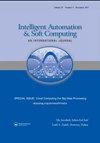基于无监督学习的云环境下运行时恶意软件注入攻击预防
IF 2
4区 计算机科学
Q2 Computer Science
引用次数: 3
摘要
云计算利用各种基于互联网的技术来增强互联网用户的体验。云系统正在崛起,因为这项技术已经彻底改变了数字产业。目前,许多用户依靠基于云的解决方案来获取业务信息和知识。因此,诸如SaaS和PaaS之类的云计算服务存储了大量敏感和有价值的信息,这使得云系统成为许多恶意软件创建者和黑客的明显目标。这些恶意攻击者试图从不安全的电子学习系统中非法获取大量有价值的信息,如用户个人信息、密码、信用卡/借记卡号码等。安全作为云服务的重要组成部分,需要保护业务客户和用户免受未经授权的威胁。本文旨在使用固定权重Hamming和Mexiannet的无监督学习模型来识别攻击基于云的软件解决方案的恶意软件。研究了针对云服务中未知文件的不同类型的攻击方法和恶意指令的各种方式。本研究的结果和分析提供了一种改进的无监督学习检测算法,准确率为94.05%。本文章由计算机程序翻译,如有差异,请以英文原文为准。
Prevention of Runtime Malware Injection Attack in Cloud Using Unsupervised Learning
Cloud computing utilizes various Internet-based technologies to enhance the Internet user experience. Cloud systems are on the rise, as this technology has completely revolutionized the digital industry. Currently, many users rely on cloud-based solutions to acquire business information and knowledge. As a result, cloud computing services such as SaaS and PaaS store a warehouse of sensitive and valuable information, which has turned the cloud systems into the obvious target for many malware creators and hackers. These malicious attackers attempt to gain illegal access to a myriad of valuable information such as user personal information, password, credit/debit card numbers, etc., from systems as the unsecured e-learning ones. As an important part of cloud services, security is needed to protect business customers and users from unauthorized threats. This paper aims to identify malware that attacks cloud-based software solutions using an unsupervised learning model with fixed-weight Hamming and Mexiannet. Different types of attack methodologies and various ways of malicious instructions targeting unknown files in cloud services are investigated. The result and analysis in this study provide an evolution of the unsupervised learning detection algorithm with an accuracy of 94.05%.
求助全文
通过发布文献求助,成功后即可免费获取论文全文。
去求助
来源期刊

Intelligent Automation and Soft Computing
工程技术-计算机:人工智能
CiteScore
3.50
自引率
10.00%
发文量
429
审稿时长
10.8 months
期刊介绍:
An International Journal seeks to provide a common forum for the dissemination of accurate results about the world of intelligent automation, artificial intelligence, computer science, control, intelligent data science, modeling and systems engineering. It is intended that the articles published in the journal will encompass both the short and the long term effects of soft computing and other related fields such as robotics, control, computer, vision, speech recognition, pattern recognition, data mining, big data, data analytics, machine intelligence, cyber security and deep learning. It further hopes it will address the existing and emerging relationships between automation, systems engineering, system of systems engineering and soft computing. The journal will publish original and survey papers on artificial intelligence, intelligent automation and computer engineering with an emphasis on current and potential applications of soft computing. It will have a broad interest in all engineering disciplines, computer science, and related technological fields such as medicine, biology operations research, technology management, agriculture and information technology.
 求助内容:
求助内容: 应助结果提醒方式:
应助结果提醒方式:


